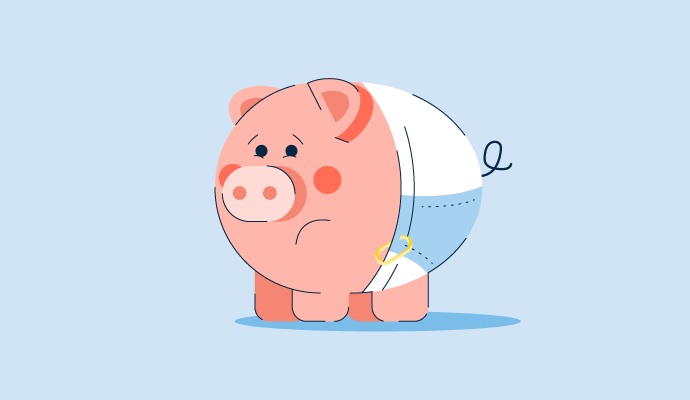Leaks are never good.
Water leaks, story leaks, but revenue leaks? A leak related to your company’s revenue is bad. Really, really bad.
Every business experiences revenue leaks and can easily tackle them with revenue management software.
What is revenue leakage?
Revenue leakage is the unnoticed and unintentional loss of a company’s revenue. No business is immune to revenue leakage. It can happen on both the income and expenditure sides but primarily takes place due to under-billing.
Regardless of the technologies and solutions available to companies, revenue leakage is a huge issue for businesses of all types and sizes.
Examples of revenue leakage
Consider a SaaS product vendor who fails to prepare an invoice for a customer starting toward the middle of a month. In this case, the vendor wastes fifteen billing days providing services free of charge Losses from this could equate to thousands of dollars.
Revenue leakage also commonly occurs due to human errors. If an employee incorrectly enters the product cost as “$50” when its original price is “$500,” a simple typo could result in massive losses. Imagine the order is twenty units of a product –that’s a straight $9,000 revenue leak.
Customers are unlikely to point out this mistake. Businesses need systems to detect errors in the first place. Using spreadsheets to track payment due dates or status isn’t really effective since spreadsheets are manually created and managed. There’s hardly any scope for automation with these.
Quer aprender mais sobre Software de Gestão de Receitas? Explore os produtos de Gestão de Receitas.
What causes revenue leakage?
Stopping revenue leaks is essential, and you need to understand why and how they happen. Only then can you take preventive measures to reduce and prevent revenue leakage and the resulting damage.:
- Manual data entry: All manual tasks are riddled with human errors. Such errors can jeopardize a company's revenue. If your business manually creates and tracks invoices, data entry errors are likely to occur. Incorrect data is hard to detect and leads to massive losses.
- Failure to send invoices: It’s important to send an e-invoice before expecting payment. A customer wouldn’t likely come forward and remind you to raise it if you forget. Also, they won’t pay you until they receive the invoice. To avoid miscommunication, you need to have an automated system to send and track invoices whenever they’re due.
- Global customers: When you have customers in different countries, their billing requirements can be different, and the currency and contract terms make the process even more complex. Having systems to account for these conditions and manage clients is essential to avoid revenue leaks.
- Failure to track tasks: Employees may not always stay up-to-date on payments and due dates. They spend a lot of time checking and replying to emails, conducting meetings, or just being idle. Failure to follow up and stay current on payments and invoices can lead to errors, siloed communication, and ultimately, leaks in revenue.
- Higher CPCs: CPC or cost per customer helps avoid revenue leakage. It’s better to slowly acquire customers than spend a huge sum of money on a few clients.
- Abandoned carts: Abandoned carts are a common sight on e-commerce strategy and software-as-a-service (SaaS) platforms. Many products saved without completing checkouts can leave you missing out on potential revenue.
- Using spreadsheets: Many organizations rely on spreadsheets for different billing activities. Spreadsheets are cumbersome, and updating them is a tedious manual process. Employees need to keep a close and regular watch on the spreadsheet data, which is tough. Spreadsheet workflows become even more tedious when getting transferred to billing software. Gaps and errors in data are the major causes of revenue leakage.
Why is revenue leakage important?
You can’t make profits without revenue. Revenue fuels businesses and you need enough of it for your daily activities. While initial revenue leakage may seem insignificant, it builds up over time and, if not recognized in time, can hurt your business value. In some cases, this could even cause businesses to close down.
How severe is revenue leakage?
While bitter, the financial impact of revenue leakage can vary by industry.
Industries such as healthcare typically feel the greater impact of revenue leakage. Unpaid bills are common in healthcare. Companies with high revenue leaks suffer while developing new products, providing new services, and boosting their business. They also face non-optimized cash flow and higher borrowing rates.
How to identify and stop revenue leaks
Here are some ways you can stay ahead of the game and identify and prevent revenue leaks.
Revenue leaks are usually not identified until they show their impact. Some companies cannot even trace them.
So how do you identify and take precautions to avoid revenue leakages? You can do this in a few ways by pinpointing vulnerabilities in your business.
- Data mining: Review your helpdesk software and customer success platforms to understand your purchase trends, payments, conversions, and reasons for customer churn. Even recurring billing data can help you know the areas of potential revenue leaks.
- Numbers that stand out: Think a metric is weird? If it stands out, it’s definitely unusual. Anomalies usually show themselves and require action as soon as possible.
- Follow-ups: Delays in follow-ups related to lead sales qualification, lead scoring, tracking customer behavior, and can lead to revenue leaks.
Revenue leak questions to ask yourself
No business can afford to leave revenue leakage unattended as it builds up and even shut businesses down. Here are some questions you can ask yourself to evaluate your business and understand if you’re at risk of a revenue leakage:
- Do you have out-of-date systems? Using old solutions can cause revenue leaks. A lack of automation and reliance on manual processes can lead to small slips and colossal revenue leaks. Setting up automated systems helps you keep a tab on your money.
- Do you have complex pricing structures? Keeping it simple is highly beneficial when it comes to pricing. Having more than an optimal number of offerings with confusing prices can cause billing errors and revenue leakage.
- Do you offer a lot of discounts? Offering discounts is a way to attract and retain customers. Discounts can result in revenue leaks if used multiple times by the same user. Also, pay attention to the discounted price being calculated on every purchase instead of one. Not having systems to spot these red flags is a major cause of revenue leakage.
Common points of revenue leakage
Revenue leakage occurs in unexpected places that sometimes you can't get through. If you spot and fix errors before they do any damage, revenue leaks won't negatively impact your business.
Here are some common reasons for revenue leaks:
Data entry errors
Spreadsheets are the number one source of revenue leaks. Companies that transition from small to big usually struggle with them as managing new clients and transferring old records on spreadsheets gets tedious.
Data synchronization errors
This is a continuation of the previous error. Spreadsheets can cause errors in data sync. A customer's typical journey starts with trying a free plan, upgrading it, or even downgrading it at any time. There is no way that you can manually manage this with spreadsheets. You need a system that can handle these changes automatically.
Expired credit cards
Expired credit cards are pretty standard. Receiving a canceled payment is known as dunning, and it’s a long process. The card is processed for the fee multiple times, and eventually, you need to reach out to the cardholder. This disruption can stir up revenue leakage and destroy your bottom line.
Preventing revenue leaks
Revenue leakage shouldn’t be taken lightly as it affects industries of all sizes, small or large. Once you identify areas where you’re likely to experience revenue leaks, you can take steps to prevent them.
- Automation: Process centralization and automation help facilitate approvals, send invoices and timesheets, and monitor and track them.
- Data validation: Validation checks across various systems ensures accurate data. Timely flagging incorrect data to relevant departments help make corrections before sending invoices to the client.
- Real-time data: Data analytics track your information and cash flows to remove any glaring errors. Analyzing data can also help you improve team efficiency and customer experience.
- Client engagement: Being on top of communication and avoiding silos leads to complete transparency toward your customers. It also simplifies the entire buying process.
- Revenue leak audit: You need to analyze your business processes to understand what can be done to eliminate revenue leaks. Identify the primary sources of leakages and tackle them head-on.
Facing revenue leaks head-on
While revenue leaks might not show up until the last minute, there are ways to tackle them before they can cause damage. Revenue leaks are a serious issue and can make you lose your earnings. Approaching it proactively by setting up the right systems in your company can soften the blow.
Sharing is caring, isn’t it? Revenue sharing keeps all the stakeholders in a company happy. Learn more.

Adithya Siva
Adithya Siva is a Content Marketing Specialist at G2.com. Although an engineer by education, he always wanted to explore writing as a career option and has over three years of experience writing content for SaaS companies.

